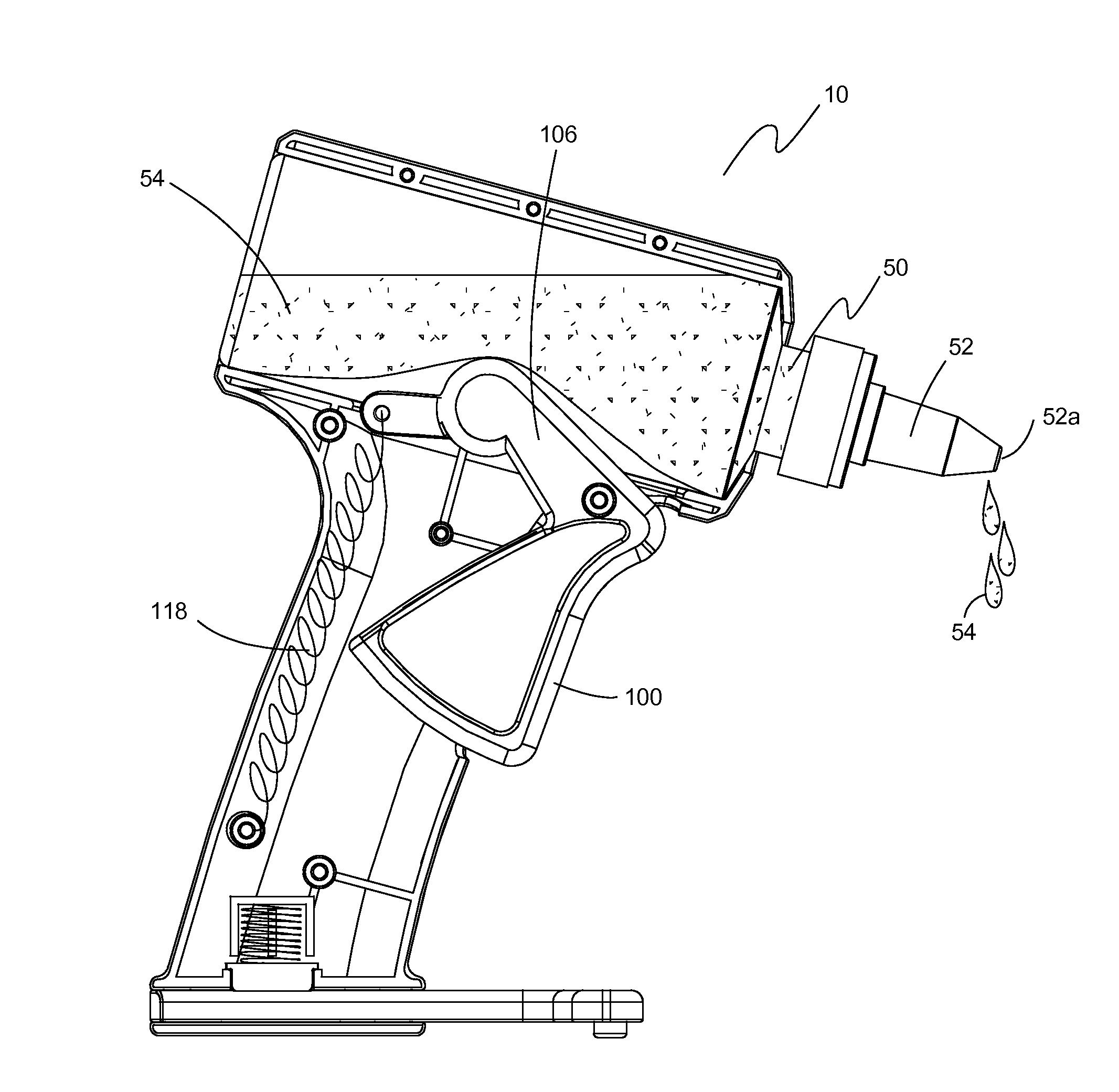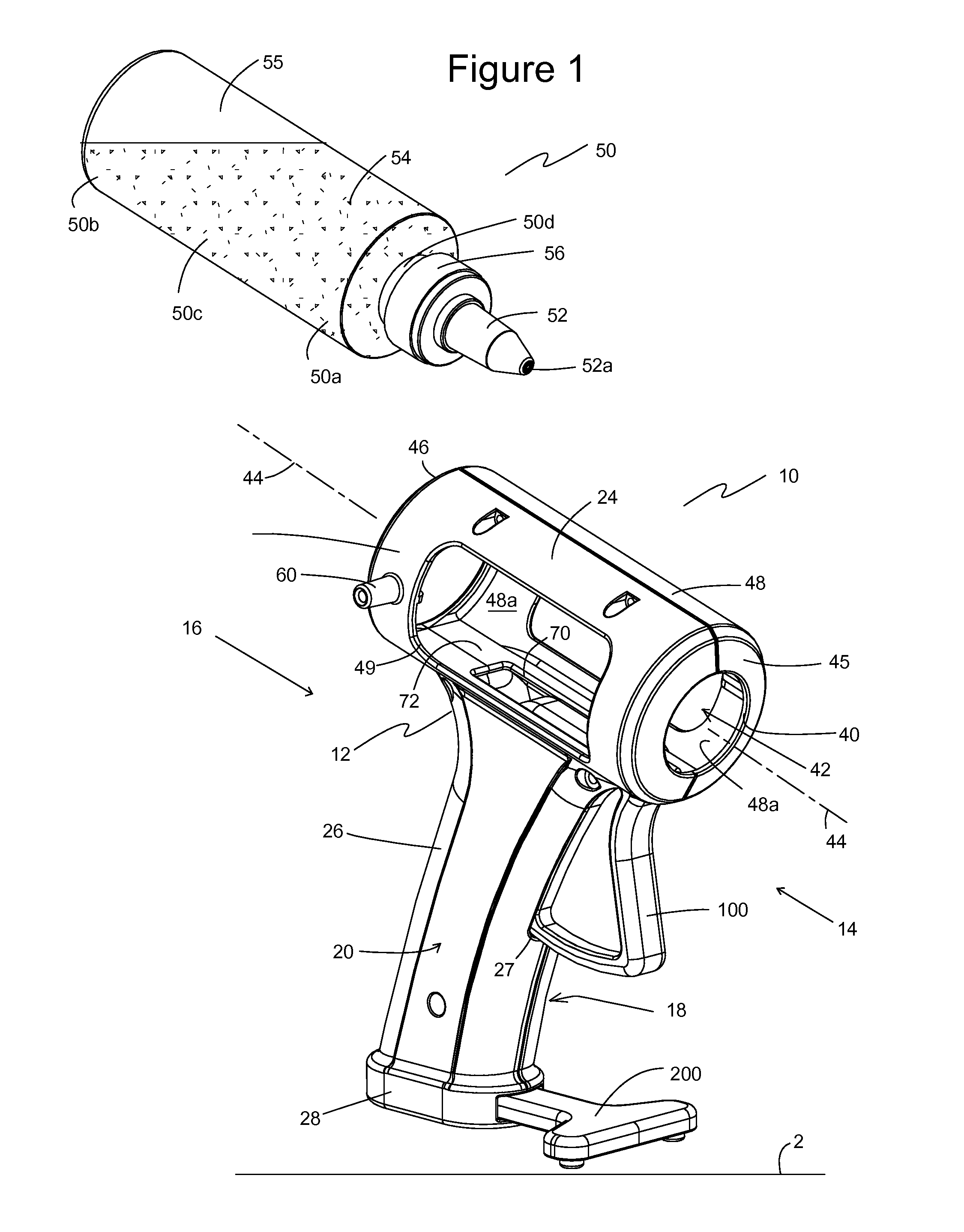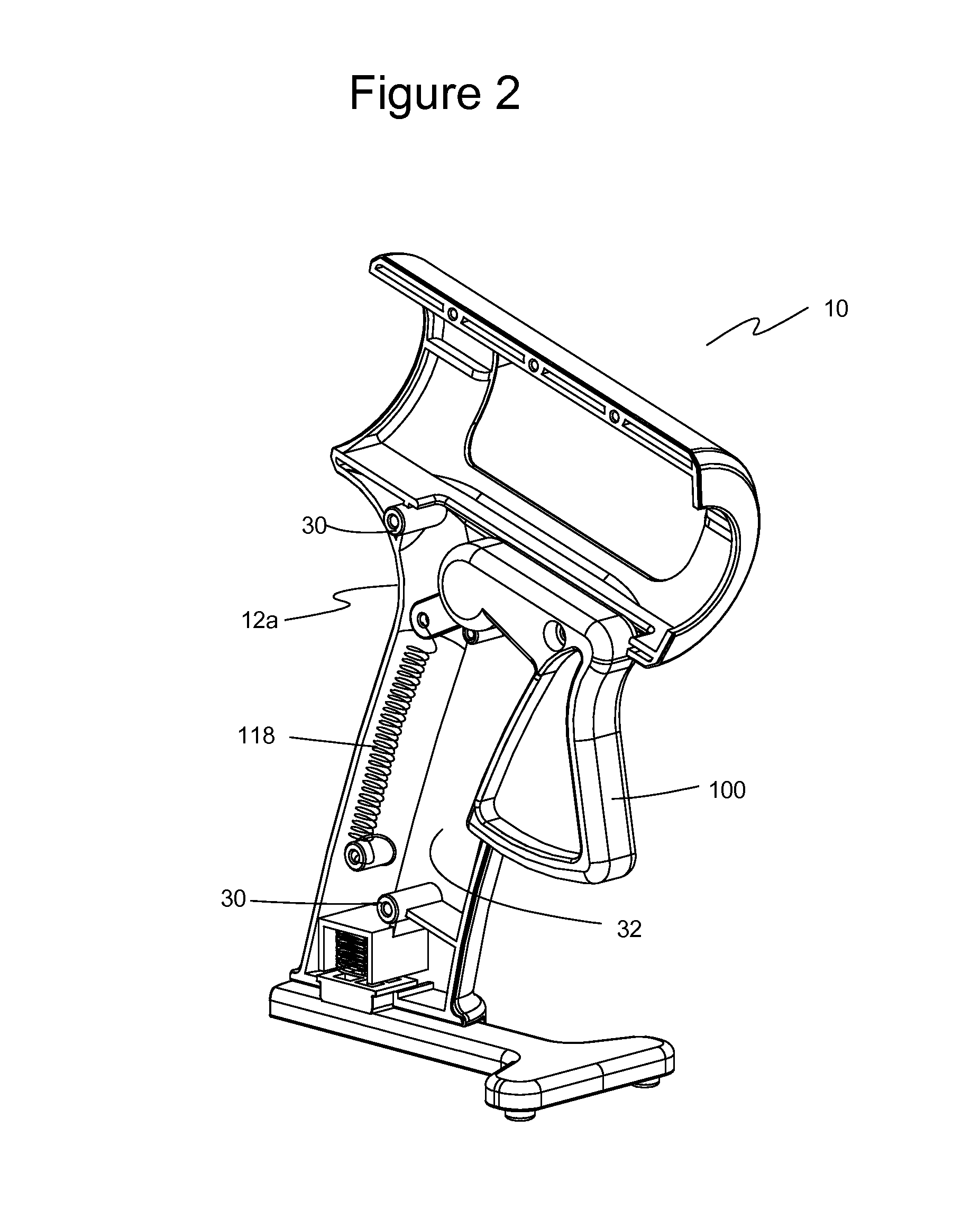Squeeze container liquid extrusion tool
- Summary
- Abstract
- Description
- Claims
- Application Information
AI Technical Summary
Benefits of technology
Problems solved by technology
Method used
Image
Examples
Embodiment Construction
[0045]The preferred embodiments of the present invention are illustrated in FIGS. 1-11. FIG. 1 illustrates a front, top, and side perspective view of one embodiment of an extrusion tool 10 usable with a liquid or other flowable product 54 contained in a squeeze container 50. Squeeze container 50 may be, for example, a bottle, a tube, or other type of container. Extrusion tool 10 has a dispenser body 12 with a front portion 14, a rear portion 16, a first side portion 18, and a second side portion 20. Dispenser body 12 includes a container-receiving portion 24, a handle portion 26, and a base portion 28, where the handle portion 26 is connected to and extends between container-receiving portion 24 and base portion 28. A trigger 100 is operatively connected to dispenser body 12.
[0046]Container-receiving portion 24 has a front end 45 that defines a forward-facing aperture 40. Container-receiving portion 24 has a peripheral sidewall 48 that defines container well 42 extending longitudina...
PUM
 Login to View More
Login to View More Abstract
Description
Claims
Application Information
 Login to View More
Login to View More - R&D
- Intellectual Property
- Life Sciences
- Materials
- Tech Scout
- Unparalleled Data Quality
- Higher Quality Content
- 60% Fewer Hallucinations
Browse by: Latest US Patents, China's latest patents, Technical Efficacy Thesaurus, Application Domain, Technology Topic, Popular Technical Reports.
© 2025 PatSnap. All rights reserved.Legal|Privacy policy|Modern Slavery Act Transparency Statement|Sitemap|About US| Contact US: help@patsnap.com



